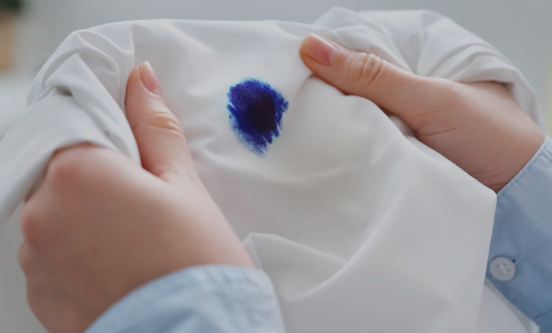Best Quality Tips For Removing Ink Stains From Fabrics

Ink stains on fabrics can be a nightmare, but fear not! This comprehensive guide is here to provide you with the best quality tips to effectively and safely remove ink stains from various types of fabrics. Follow these expert recommendations and bid farewell to stubborn ink marks.
Understanding the Fabric: A Crucial First Step
Before diving into stain removal techniques, it’s essential to understand the type of fabric you’re dealing with. Different fabrics require different approaches to prevent damage. Always check the care label on your clothing for specific instructions.
1. Identifying Fabric Types
- Cotton: Robust and versatile.
- Silk: Delicate and requires gentle care.
- Polyester: Resistant to stains but can be sensitive to certain chemicals.
- Wool: Prone to damage; needs special attention.
- Blends: Consider the properties of each fabric in the blend.
Swift Action: Immediate Steps After a Stain Occurs
Act quickly to increase the likelihood of successful stain removal. The longer the ink sits, the more challenging it becomes to eliminate.
2. Blot, Don’t Rub
- Use a clean cloth or paper towel to blot excess ink.
- Avoid rubbing, as it may spread the stain.
3. Test in an Unseen Area
- Before applying any cleaning agent, test it in an inconspicuous area to ensure it won’t damage the fabric.
4. Isolate the Stained Area
- Prevent the stain from spreading by isolating the affected area.
Ink Stain Removal Techniques
Explore these proven techniques based on the type of ink stain and fabric involved.
5. Alcohol-Based Solutions for Ballpoint Pen Ink
- Dab the stain with rubbing alcohol using a cotton ball.
- Blot gently until the ink transfers onto the cotton ball.
6. Milk and Vinegar Mixture for Fountain Pen Ink
- Combine equal parts milk and white vinegar.
- Soak the stain in the mixture, then rinse.
7. Hairspray for Quick Results
- Apply an alcohol-based hairspray directly to the stain.
- Blot with a clean cloth.
8. Lemon Juice for Natural Fibers
- Mix lemon juice with cream of tartar to form a paste.
- Apply to the stain and let it sit for 30 minutes before rinsing.
9. Commercial Stain Removers
- Choose a stain remover designed for the specific fabric.
- Follow the product’s instructions carefully.
Fabric-Specific Tips
Tailor your approach based on the fabric type to ensure optimal results.
10. Cotton and Polyester
- These fabrics can withstand stronger cleaning agents.
- Opt for commercial stain removers or hydrogen peroxide.
11. Silk and Wool
- Gentle methods are crucial to avoid damage.
- Use mild solutions like milk or a mixture of glycerin and water.
12. Special Considerations for Blends
- Balance the needs of different fabric types in the blend.
- Test on a small area before applying any solution.
Post-Stain Care
After successfully removing the ink stain, it’s essential to give your fabric some extra care.
13. Washing and Rinsing
- Wash the fabric as usual, following the care instructions.
- Rinse thoroughly to remove any remaining cleaning agents.
14. Air-Dry Delicate Fabrics
- Allow delicate fabrics like silk and wool to air-dry to prevent damage from heat.
Prevention Tips to Avoid Future Mishaps
Learn how to safeguard your fabrics from ink stains with these preventive measures.
15. Avoiding Ink Mishaps
- Keep pens capped when not in use.
- Store pens in an upright position.
16. Choosing Ink Wisely
- Opt for quick-drying and non-permanent inks.
- Be cautious with bold or vibrant ink colors.
Conclusion
Mastering the art of ink stain removal requires a combination of quick action, knowledge of fabric types, and the right cleaning techniques. Armed with these best quality tips, you’re now equipped to tackle ink stains with confidence, ensuring your fabrics remain pristine and stain-free.




